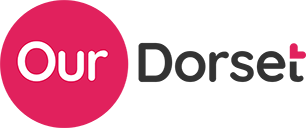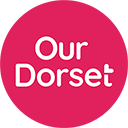Wondering what certain words or phrases mean? Our handy jargon buster provides explanations of the most common words and phrases used throughout our site.
Black, Asian and Minority Ethnic – defined as all ethnic groups except White ethnic groups. It does not relate to country origin or affiliation.
CCG stands for clinical commissioning group. These are made up of groups of GPs, who work together in their local area to commission the best services for their patients and the population they work in. CCGs are responsible for about 60 per cent of the NHS budget. However, they are being abolished from July 2022 and their functions will be delivered by the new integrated care boards.
CoP stands for community of practice – A group of people who share a common concern, a set of problems, or an interest in a topic and who come together to fulfil both individual and group goals.
The Did not Attend (DNA) project set out to build a better understanding of who in Dorset is more likely to miss their healthcare appointments, the barriers and challenges they face that cause them to do so and what they think can be done to address those barriers.
The group leading the health inequalities programme for the Dorset ICS is made up of focused, committed individuals who are setting out to create conditions in all our services to improve access, reduce gaps and develop new solutions to support health equity.
EDI stands for equality, diversity and inclusion – ensures fair treatment and opportunity for all. It aims to eradicate prejudice and discrimination on the basis of an individual or group of individual’s protected characteristics.
Being equal in status, rights, or opportunities.
Distinct from equality, equity acknowledges that people do not all start from the same position, and therefore makes adjustments to imbalances.
Geodata is information about geographic locations that is stored in a format that can be used with a geographic information system (GIS).
Health disparities are inequitable and are directly related to the historical and current unequal distribution of social, political, economic, and environmental resources.
Health inequalities are avoidable and unfair differences in access to health, and experiences and outcomes of health. Things that sometimes impact health inequalities include:
- Socio-economic status and deprivation, eg, unemployed, low income, people living in deprived areas (eg, poor housing, poor education and/or unemployment)
- Protected characteristics, eg, age, sex, race, sexual orientation, disability
- Vulnerable groups of society sometimes known as ‘inclusion health’ groups but that might include people who are vulnerable, migrants, Gypsy, Roma and Traveller communities, rough sleepers and homeless people and night/sex workers.
Health literacy is a person’s ability to read and understand basic health information and the services available to help them make decisions about their health. Health literacy is essential for both those working in healthcare and the patients who need care for several reasons.
Health Numeracy is an important part of health literacy. It is the degree to which individuals have the capacity to access, process, interpret, communicate and act on numerical, quantitative, graphical, statistical and probability information needed to make effective health decisions. Numeracy is important because it allows people to make sense of health information that uses numbers. Health-related tasks that involve numeracy skills include:
- understanding nutrition information
- interpreting blood sugar and blood pressure readings
- recording readings or results
- measuring or adjusting medications
- making and keeping appointments
- reading graphs and tables
- understanding information about risk, e.g. probability
These are campaigns to help improve everyone’s health and reduce health inequalities. Health promotion aims to help people take control of their own health and make it better, examples include breastfeeding support, exercise programmes and nutrition help.
HEAT stands for health equity assessment tool – HEAT is the main tool for professionals across the public health and healthcare landscape to:
- systematically address health inequalities and equity-related to a programme of work or service
- identify what action can be taken to reduce health inequalities and promote equality and inclusion
HIG stands for health inequalities group – aims to ensure that achieving health equity for all remains a key area of policy and practice.
The act or practice of including and accommodating people who have historically been excluded due to their race, gender, sexuality, or ability.
Inclusion health has been used to define a number of groups of people who are not usually well provided for by healthcare services, and have poorer access, experiences and health outcomes. The definition covers people who are:
- homeless and rough sleepers
- vulnerable migrants (refugees and asylum seekers)
- sex workers
- those from the Gypsy, Roma and Traveller communities
Traditionally, some health and care organisations have tended to work independently, but patients often have lots of different needs. Integrated care is a way of getting health and care organisations including hospitals, GPs, councils and voluntary organisations, to work together in a way that helps patients. It has been happening successfully in some areas for a long time but the health and care bill makes it official.
A statutory NHS organisation which is responsible for developing a plan for meeting the health needs of the population, managing the NHS budget and arranging for the provision of health services in a geographical area. They aim to:
- Improve outcomes in population health and healthcare
- Tackle inequalities in outcomes, experience and access
- Enhance productivity and value for money
- Help the NHS support broader social and economic development
Joins up care leads to better outcomes for people. When local partners – the NHS, councils, voluntary sector and others – work together, they can create better services based on local need. They aim to:
- improve outcomes in population health and healthcare
- tackle inequalities in outcomes, experience and access
- enhance productivity and value for money
- help the NHS support broader social and economic development
Lesbian, gay, bisexual, transgender, queer or questioning, intersex, asexual, and more. These terms are used to describe a person’s sexual orientation or gender identity.
Life expectancy tells us the average number of years of life a person who has attained a given age can expect to live.
Generally, this is just another word for a local council, but it can refer to any administrative organisation in local government.
Within an integrated care system, there are a number of levels. Neighbourhood is the smallest area at which services will be delivered to patients. A neighbourhood will look after around 30 to 50,000 people and will be made up of GPs, pharmacists, dentists and opticians all delivering primary care services together as a primary care network. A neighbourhood often corresponds with an electoral ward of a district or borough council.
This is a plan for the future of the NHS, written using feedback from staff and patients. It includes many of the changes which have been included in the health and care bill. You can read more details about the plan on the NHS England and NHS Improvement website.
Population health means looking at all the information about a particular population to see what things are affecting health. For example, poverty, poor housing, obesity levels, and access to health services. There are many things that can lead to poor health, which is why it’s important for councils and health services to work together. Integrated care systems will be tasked with improving the population health of the area they serve.
Prevention involves working to improve people’s lifestyles to try to prevent ill health from happening in the future. For example, stop-smoking campaigns to prevent cancer cases, or weight management programmes to prevent obesity-related problems.
This is the first level of care people access before going to a hospital. It includes GPs, dentists, opticians, pharmacists, community health teams and mental health community teams, as well as social care. Hospital care is considered to be secondary care.
PCNs are groups of GP practices that work with each other and with community, mental health, social care, pharmacy, hospital and voluntary services in their local areas. They are led by a clinical director who may be a GP, general practice nurse, clinical pharmacist or other clinical profession working in general practice.
Is the delivering of services proportionate to the level of need. Services are universally available and are able to adjust to the level of need.
It is against the law to discriminate against someone because of a protected characteristic. The protected characteristics covered by the Equality Act 2010 are:
- age, disability
- gender reassignment
- marriage and civil partnership (but only in respect of eliminating unlawful discrimination)
- pregnancy and maternity
- race—this includes ethnic or national origins, colour or nationality
- religion or belief—this includes lack of belief, sex and sexual orientation
Public health is usually run by a local council, and includes running health programmes that help to improve the health of everyone living in the local area, such as encouraging exercise, healthy eating and weight management. It includes work on wider issues affecting public health, such as poor housing or poverty.
Public Health Dorset works together with partners to improve and protect the health and wellbeing of people living in Dorset, Bournemouth and Poole.
These are the conditions in which people are born, grow, work, live, and age. The determinants also cover the wider forces that shape this, like economics, environment, social policies and politics.
The linear decrease in health that coincides with decreasing social position.
The social standing or class of an individual or group. It is often measured as a combination of education, income, and occupation.
A sustainable community manages its human, natural, and financial capital to meet current needs while ensuring that adequate resources are available for future generations.
System working is the description used for how integrated care systems have been working since July 2022. It’s about health and care services working together in a particular area, to make things work better for patients.
This refers to organisations that are not profit-making businesses and are not public bodies such as councils, or the NHS, so it generally means charities and voluntary organisations. Anything that is not private sector, or public sector is considered third sector.
The virtual academy is where we aim to address disparities in health outcomes and promote equitable access to healthcare. Here you will find written, video, and podcast materials to learn more about addressing health disparities.
These are normally organisations that are connected to health and social care, delivering vital services into communities to improve people’s wellbeing.

